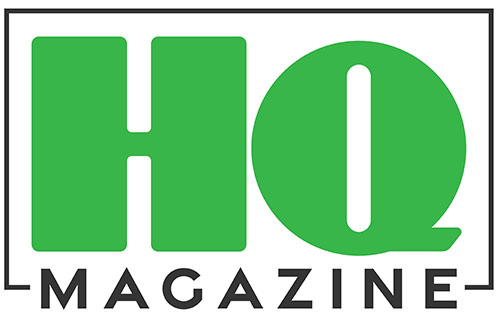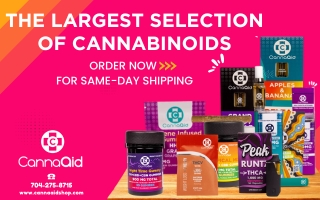Media Bias: Finding the Slant
“Chumps prefer a beautiful lie to an ugly truth.”
— Iceberg Slim, hustler extraordinaire
Nearly everyone alive believes the media is biased. Most of us can name the bias of every major newspaper and cable channel as easily as we can recite the ABCs. If you’re in that majority, certain that you can determine slant from a distance, this test is for you.
It’s simple: See if you can identify the publications (and thus the bias) from their headlines alone.
Author’s Note: This is the third part of HQ’s investigation into “What Do We Really Know?” Part II examined how social media impacts our perception of reality and ourselves, and suggested a more mindful engagement with technology as a way to counteract these influences.
To make it fair, the selected front-page headlines all cover the same story (when a case about government influence over social media platforms came before the Supreme Court) and were all published on the same day (Monday, March 18, 2024). Two liberal and two conservative newspapers were chosen: the New York Times, the Washington Post, Wall Street Journal, and the Washington Times. See if you can match the headline to its publication.
No cheating.
- A: Justices Skeptical of GOP Claims of Censoring | Plaintiffs allege that government pressure led online platforms to muzzle their views
- B: Justices consider tech contacts | MOST SEEM TO BACK BIDEN EFFORT | At issue: Officials’ ability to push for post removals
- C. COURT SKEPTICAL OF STATES’ CLAIM ON FREE SPEECH | CASE ON SOCIAL MEDIA | Justices Wary of Curbing Federal Bias to Sway Tech Platforms
- D. Justices wary of limiting government communications with social media
Was that as easy as you thought it would be? By all accounts, any political slant should show up in these headlines. After all, they concern both the Biden administration and the Supreme Court. But you probably didn’t feel certain of your answers. In fact, it’s hard to spot the slant at all. The answers, in order, are WSJ, WaPo, NYT, WT.
The purpose of this little quiz is to demonstrate an uncomfortable truth. Almost to a person, our country is very bad at identifying bias, even though we think we’re great at it. That combination primes us to believe in misinformation.
Ask any conman who’s the best mark, and they’ll tell you it’s the guy who thinks he’s too smart to fall for the trick. The only people who pony up money for a shot at three-card monte are the ones who are sure they’ll get it right.
But it’s hard for any of us to accept that we might be chumps. Awfully hard.
We have to recognize that spotting media bias is less a skill and more a practice, one that demands continuous attention and a readiness to update our own viewpoints in light of new information.
Accepting the Truth
If you did poorly on the quiz, there’s a better-than-average chance you’ve already rationalized away the lesson. You may have told yourself the stories are not reflective of these papers’ normal output, or that they were chosen exactly because they were tricky, or that a headline doesn’t provide enough context to reveal slant. There is a kind of ego preservation tactic, and it prevents us from accepting information we don’t like. If you spend time in any comment section, you can watch this place out ad nauseum.
But don’t lose hope. You’re actually better at this than this exercise might imply. If you were to look at the website for Fox News and CNN, you could quickly identify the bias—even if the site names were blacked out. It’s only when you see a headline out of context that it’s suddenly difficult to discern it’s lean.
In other words, our inability to spot bias is really a problem of incomplete information. Unfortunately, the way we consume news now is almost exclusively through formats that provide incomplete information. (Full confession: the author of this piece had to look up the answers as well, even though he had typed the exercise up just one day before. He had the answers and couldn’t get it right. He is not judging you.)
In a presidential election year, it’s easy to see how our blindness to bias can lead to real consequences.
As we increasingly turn to social media apps and headline aggregators to keep us informed, we’re more likely to encounter nugget-sized snippets instead of full, well-reported stories. This means it’s likely that we—the smart, sophisticated readers of this magazine—might get totally hosed.
Unless, of course, we learn a few lessons.
Confronting the Other Bias
If we’re going to overcome our inability to spot media bias, we must begin by understanding it’s something we’re bad at. That part isn’t really our fault. Media outlets have become extremely adept at hiding their biases. They’ve had to.
That means we’re going to have to overcome our own bias, the one that makes us think of ourselves as better-than-average readers. We must accept that whether we’re scanning the headlines from Apple News or scrolling through Facebook, we’re not as sophisticated at ferreting out bias as we think.
The latest data estimates that Americans burn through 3 to 6 hours every day staring at mobile screens. During that time, we’re not browsing news apps. Instead, we encounter news by thumbing social apps—the breeding grounds for those McNuggets of misinformation.
We’re rarely given the time and space to consider the news. We read a short burst of a story—just enough to register an emotional reaction—then get pushed forward. Today’s apps want to keep us moving, watching another video, scrolling to the next headline, reading a new comment.
We have to recognize that spotting media bias is less a skill and more a practice, one that demands continuous attention and a readiness to update our own viewpoints in light of new information. We can’t assume that our technology is one step behind us anymore.
Before we share, comment, or become incensed by another headline—we need to stop and consider that we’re likely falling for the latest twist on the oldest con in the game: falling for the beautiful lie instead of the ugly truth.













